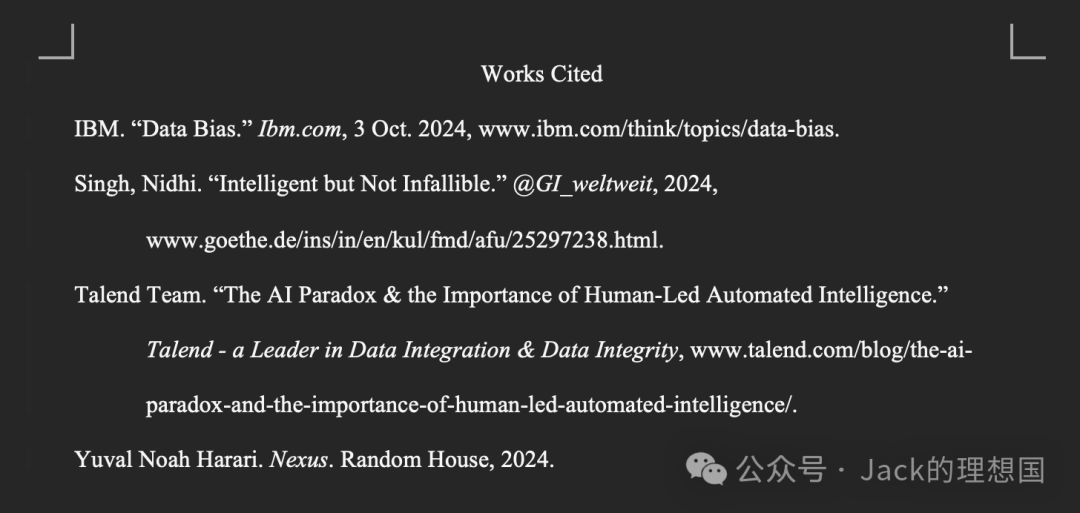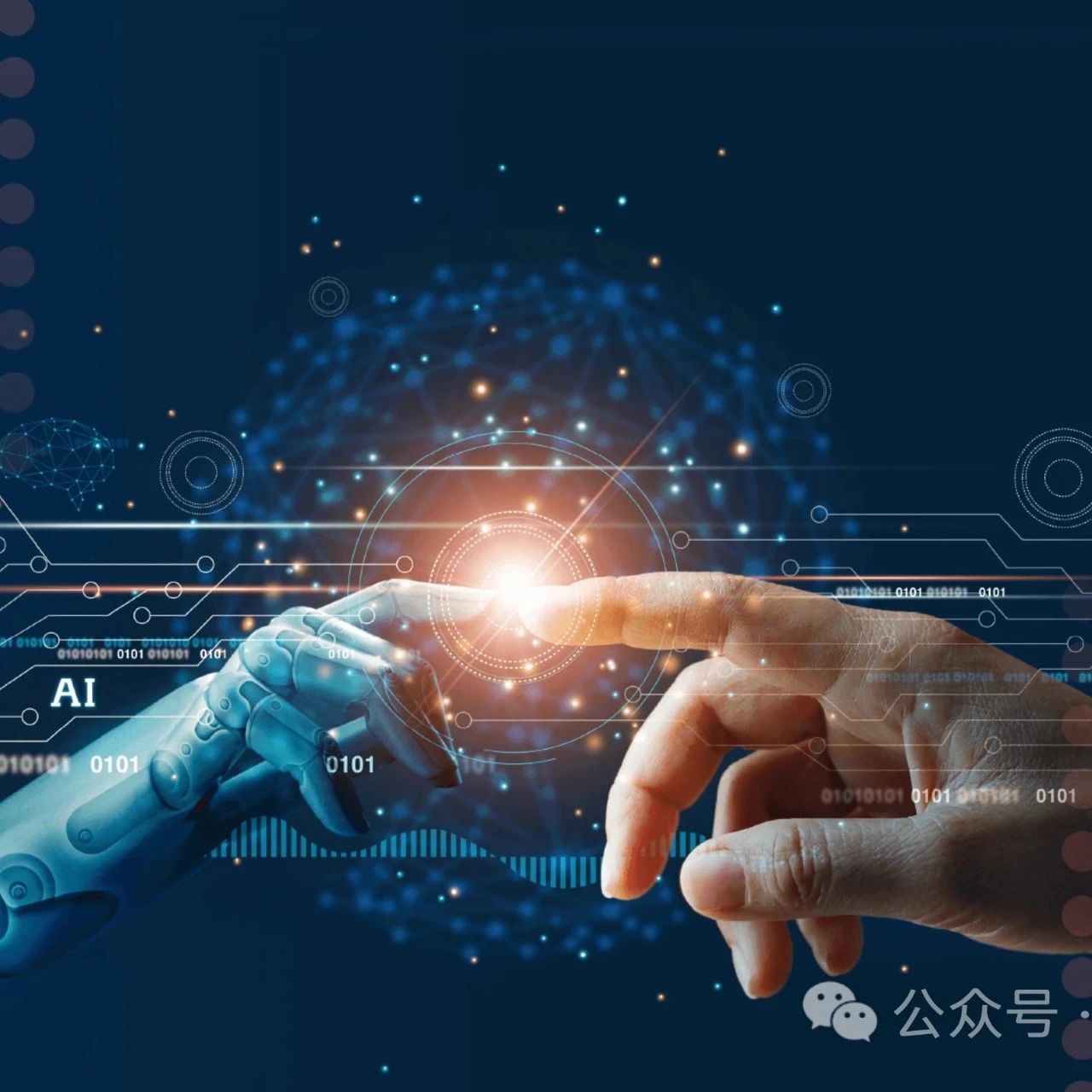The Quest for Infallibility 对无误信息的追求
The Quest for Infallibility: An Unrealizable Fantasy?
Note: This article continues a series on AI and the future.
A feature of the human language, which differentiates itself from the means of communication displayed by other organisms, is its ability to create and disseminate “fiction,” or stories, that boast the power to unite large groups of individuals. Some of the most powerful stories ever made up, such as Christianity and the creed of capitalism, have pulled together millions upon millions of people from diverse political, cultural, and socioeconomic backgrounds.
However, as humans coalesced into increasingly complex societies, political and cultural authorities realized a greater need to maintain order. Such a need translated into a new pursuit: How to strengthen or churn out new, more convincing fictional tales to be told to the masses. A solution societies have experimented with is searching for and achieving infallible information. Authorities may quickly validate the fiction they narrate by appealing to a source or agent incapable of error. The term “infallible information” refers to information that is entirely accurate and beyond any possibility of being wrong. Most popular religions today and historically have strengthened their powers to unite by creating the fantasy of humans connecting to a superhuman, infallible “intelligence.” This infallible “intelligence” guides human behavior and decision-making.
From the past to the present, the quest for infallibility has consisted of two essential sub-tasks: Take humans, who are bound to make mistakes, out of the information loop, or generate a “free market of information” where any error can be found and “replaced” with the “truth.” Through case studies of The Bible, the printing press, and the internet, this essay will first examine why completing these sub-tasks did not necessarily lead to infallibility in history. Then, in light of the current AI revolution, this essay will discuss whether AI marks another unsuccessful attempt by humankind to craft ever-stronger tales that promise a society free of errors.
The Bible, or more specifically, the Old Testament, written at different times from 1200 to around 165 B.C.E. by the Jews, arguably marked the first attempt by humans to achieve information infallibility by completing the first sub-task: Taking humans out of the loop. Historians surmise that a principal motive behind writing the Old Testament was to create a single holy book to store all the known prophecies, prayers, and chronicles that embody the words of Jehovah. This content is ridden with errors, and a representative of Jehovah or himself, not a human of any kind, must have delivered it. This mechanism of claiming infallibility attempted to prevent all further arguments about whose prophet or priest’s words to believe and whose to not. More importantly, by establishing a standardized set of faultless stories, the rabbis hoped to unite a larger group of pious Jewish communities who would believe in the same gospels from the same deity.
Unfortunately, while the composition of the Old Testament marks an early try to foster cultural or religious unity via an appeal to infallibility, the effectiveness of such a try generally fails to withstand questioning. A thorny issue arose with the need for interpretation. Even when agreements could be made regarding the wording of The Bible, the exact words of God could be understood in various ways. For instance, the holy book proclaims that one should not work on the Sabbath. But the precise definition of “work” – what activities count and what do not – has remained nebulous. At such moments, the rabbis must be called in to make an ultimate ruling on the correct interpretation. In this case, the rabbis claimed that reading a book is not work, but tearing paper is work. Consequently, an increasing number of pious Jews and Christians relied on the rabbis to validate their actions. This group of religious leaders who presided over the interpretation of the sacred scriptures gained substantial power, becoming the Jewish technocratic elite.
The example of The Bible illustrates a significant hardship when achieving infallibility by taking humans out of the loop. It would be a tall, almost improbable order to remove humans and their errors from the process. Writing down the word of Jehovah was meant to bypass the fallible authority of the previous priestly institutions. Still, driven by the need for a straightforward interpretation, it led to the “rise to the authority of a new [fallible] rabbinical institution,” as the historian Yuval Noah Harari rightly highlights. This pattern suggests that the quest for infallibility is not only a fantasy by nature but also generates much dynamism and change in social structures and power distribution.
During the Renaissance, the method adopted by religious institutions, namely the Catholic Church, of appealing to infallibility by taking humans out of the loop began to fail. This method created a horrendously wide gap in power between the ordinary people and the Church, which led to social unrest and protests against the corrupt religious institution. Subsequently, in the mid-15th century, when a new piece of information technology – the printing press – was introduced, societies saw another opportunity to pursue infallibility by adopting a novel method: The “cultivation” of a free market of information.
The printing press allowed for the vast and immediate distribution of informational material. Therefore, Europeans at the time believed that by permitting endless streams of information to flood into this “market,” people could discern false information from accurate information through mechanisms of cross-verification and comparison. Errors would inevitably be exposed and displaced by truth.
That belief proved to be wishful thinking. Consider the example of the witch hunts in Europe during the 15th through the 17th centuries. These hunts constituted a widespread phenomenon where people, especially women, were wrongly accused of witchcraft and subjected to trials, often resulting in execution. The printing press, which should theoretically have made people realize the inherent absurdity and wrongfulness of conducting these hunts, was instrumental in providing momentum to this fanatical movement. For example, in 1485, Heinrich Kramer, a German churchman and inquisitor, published a book called The Hammer of the Witches. This book was written to describe, in detail, the continentwide conspiracy surrounding witches and guide the average household to discover and kill them. Without the printing press, it might be difficult for Kramer to spread his conspiracy theories. However, with this technology, the book became one of the best European sellers, even though many churchmen and scientists expressed skepticism towards Kramer’s wild claims.
This example suggests that after the advent of the printing press, there was no correlation between creating an information free market and eradicating all false information. The printing press led to the dissemination of conspiracies that significantly impacted societies, as the witch trials resulted in the death of an estimated 40,000 to 60,000 individuals. Faced with an ocean of information, people’s tendency towards fallibility could be amplified, as they would fall for information most strongly appeals to their emotions.
It is pertinent to briefly mention a much more recent technological invention, the internet, during the late 1980s and early 1990s. Like the printing press, the internet marks another attempt by humans to seek infallibility by generating a free market of information. Unlike the printing press, though, which could only spread information quickly within a bounded region, the information market born from the internet is truly global, spanning dozens of countries. Early proponents of the Internet, especially those working on the World Wide Web, viewed this technology as a way to democratize information and make it universally accessible. The idea was that, by providing easy access to vast amounts of knowledge, people could share expertise, exchange ideas, challenge established narratives, and reject false information for cross-verified ones. An infallible pool of information is the ultimate prize ahead.
What scenario actually occurred? The internet proved to be ineffective in the quest for infallibility. The internet has served multiple times as the breeding ground for influential conspiracy theories that go against basic scientific principles and findings. For example, when COVID hit, even though scientists around the world were quick to disseminate true knowledge about the spread of the virus, theories like 5G cable towers could spread the virus and that the virus was an artificially manufactured product for military intentions still caught the attention of many. Unverified, wrong information during many elections around the world also took advantage of the free, unbounded design of the internet to powerfully appeal to the masses. Humans have sought information infallibility by creating a free market from the past to the present. Yet, this method, like the previous one that aims to take humans out of the loop, has repeatedly failed.
Now, at the cusp of an unprecedented information revolution – the AI revolution – will humans’ everlasting quest for infallibility be finally realized? This essayist believes that one should think of AI as primarily an infallible source of information. Quite comparable to the composition of The Bible, many AI engineers envision a day when fallible humans can be taken out of the system. Algorithms can train themselves to perfection with data without the interference of a human computer scientist. When this day dawns, humans shall eventually hail the birth of the first piece of infallible technology they have ever created.
Unfortunately, in the near term, as long as societies want to regulate AI and determine what features to put on or remove from the table, this day appears quite distant. AI development entails an inherent paradox: “The more we automate data analytics, the more work is required of humans to cover edge cases, provide high-level scrutiny, and put meaning to the insights.” Taking the human touch out of the equation may work out beautifully for basic tasks, such as designing software that moves data from one location to another. However, the more powerful AI algorithms evolve, the more humans are needed to program aspects such as humanity, ethics, and values into machines. It turns out, thus, that the shaping of a supposedly infallible machine god still requires the work of fallible Sapiens.
The social challenges of AI are even more profound. First, will the quest for infallibility, yet again, lead to the rise of a fallible institution or social group, as in the case of the rabbis when The Bible was written? Tech firms who invest in AI models and AI trainers who feed these models data and interpret their behaviors might gain much more power to decide what knowledge or information is being fed to the millions of active AI users. Second, if AI codes become universally accessible on the internet, will a new free market of information exist? And will this market allow errors to be weeded out? Finally, on the most fundamental level, if one day, computer scientists succeed in bringing forth an AI deity, then will our fellow humans trust AI’s computing power more than a human’s neural and hormonal decision-making abilities? Will this almighty and omnipotent code obliterate the cornerstones of societies built upon mutual human-to-human trust? The quest for infallibility is not only a far-away fantasy but also a path that potentially leads to the disintegration of civilization.

《对“绝无错误”信条的追求:一个无法实现的幻想?》
注:本文为人工智能与未来系列文章的续篇。
人类语言有别于其他生物的交流方式的一个重要特点是,它能够创造和传播一些虚构的故事,这些故事具有将人团结在一起的力量。一些有史以来最强大的故事,如基督教与资本主义信条,将来自不同政治、文化和社会经济背景的数百万人凝聚在一起。
然而,随着人类凝聚成日益复杂的社会,政治和文化当局意识到更有必要维持秩序。这种需求转化为一种新的追求:如何加强或创造出新的、更有说服力的虚构故事,讲给大众听。社会尝试过的一种解决方案是寻找并获得绝无错误的信息。权威人士可以通过诉诸不会出错的信息来源或代理,迅速验证他们所叙述的虚构故事。所谓“绝无错误的信息”,是指完全准确、无懈可击的一些结论或信仰。当今和历史上流行的大多数宗教都通过幻想人类与一种超人的、绝无错误的“智慧”相联系,来加强其团结的力量。这种绝无错误的“智慧”指导着人类的行为与决策。
从古至今,对“绝无错误”这一目标的追求包括两个基本的子任务:让难免犯错的人类脱离信息循环,或者建立一个“信息自由市场”,在这个市场上,任何错误都能被发现,并被“真理”所“取代”。本文将通过对《圣经》、印刷术与互联网的案例研究,首先探讨为什么完成这些子任务并没允许人类发现或建立绝无错误的信息库。然后,结合当前的人工智能革命,本文将讨论人工智能是否标志着人类又一次不成功的尝试,即人类能否通过这项技术承诺一个没有错误信息的社会的实现。
《圣经》,或者更具体地说,由犹太人在公元前1200年到公元前165年左右的不同时期写成的《旧约全书》,可以说是人类通过完成第一个子任务来实现信息无误性的首次尝试:将人类排除在信息循环之外。历史学家推测,撰写《旧约全书》的一个主要动机是创建一本单一的圣书,以存储所有已知的预言、祈祷文和体现耶和华话语的编年史。这些内容绝无错误,必须由耶和华或他自己的代表,而不是任何容易犯错的人类来传达。这种宣称万无一失的机制试图阻止人们争论关于该相信或不该相信哪位先知或祭司的话。更重要的是,通过建立一套标准化的无误故事,犹太拉比们(宗教领袖)希望团结更多虔诚的犹太社区,让他们相信来自同一神灵的相同福音。
遗憾的是,虽然《旧约全书》的创作标志着早期通过诉诸永远无误的信息来源来促进文化或宗教统一的尝试,但这种尝试的有效性通常经不起质疑。一个棘手的问题出现在解释的需要上。即使人们能就《圣经》的措辞达成一致,他们对上帝的确切话语也有不同的理解。例如,《圣经》宣称人们不应该在安息日工作。但是,“工作”的确切定义--哪些活动算数,哪些不算--仍然模糊不清。在这种情况下,必须请拉比来对正确的解释做出最终裁定。在这则例子中,拉比声称看书不是工作,但撕纸是工作。因此,越来越多虔诚的犹太人和基督徒依靠拉比来确认他们的行为,这群主持解释神圣经文的宗教领袖获得了巨大的权力,成为犹太技术精英。
《圣经》的例子说明,通过将人类排除在外来实现无误性是非常困难的。要将人类及其错误从这一过程中剔除,是一项高难度、几乎不可能完成的任务。写下耶和华的话语是为了绕过之前祭司机构的错误权威。然而,正如历史学家尤瓦尔-赫拉利(Yuval Noah Harari)正确指出的那样,在直截了当的解释需求的驱使下,这导致了“一个新的[易出错的]拉比机构权威的崛起”。这种模式表明,对无误性的追求在本质上不仅是一种幻想,而且会在社会结构和权力分配方面产生许多动力与变化。
在文艺复兴时期,宗教机构(即天主教会)所采用的方法,即将人类排除在信息循环之外来追求绝无错误的信息,开始失效。这种方法在普通人与教会之间造成了可怕的权力差距,导致社会动荡和对腐败宗教机构的抗议。随后,在15世纪中叶,当一种新的信息技术--印刷术--问世时,社会又看到了通过采用一种新方法来追求无误性的机会:培育"一个自由的信息市场“。印刷术使得信息资料可以立即大量传播。因此,当时的欧洲人相信,只要允许无穷无尽的信息流涌入这个“市场”,人们就能通过交叉验证与比较机制来辨别虚假信息和准确信息。错误必然会被揭露,并被真理所取代,“绝无错误“的目标因此圆满完成。
事实证明,这种想法只是一厢情愿。例如,15至17世纪时欧洲展开了对女巫的猎杀。这些猎杀构成了一种普遍现象,人们,尤其是妇女,被错误地指控为巫师并受到审判,结果往往是被处死。从理论上讲,印刷术本应宣传科学资料,使人们认识到进行这些猎杀活动的荒谬性和错误性,但印刷术却为这场狂热的运动提供了动力。例如,1485年,德国教会人士兼宗教裁判官海因里希-克拉默(Heinrich Kramer)出版了一本名为《女巫之锤》(The Hammer of the Witches)的书。这本书详细描述了围绕女巫的全大陆范围的阴谋,并指导普通家庭如何发现并杀死女巫。如果没有印刷术,克拉默可能很难传播他的阴谋论。然而,有了这项技术,尽管许多教会人士和科学家对克拉默的狂言表示怀疑,该书还是成为欧洲最畅销的书籍之一。
这个例子表明,在印刷机出现之后,创造一个信息自由市场与消除所有虚假信息,创造绝无错误的信息库之间并不存在关联。印刷术导致了对社会产生重大影响的阴谋的传播,如女巫审判导致约4万至6万人死亡。面对浩如烟海的信息,人们的易错倾向会被放大,因为他们会被最能迎合他们情感的信息所迷惑。
这里有必要再简单提一下20世纪80年代末和90年代初的一项新技术发明--互联网。与印刷机一样,互联网标志着人类通过建立一个自由的信息市场来寻求无误性的又一次尝试。但与印刷术不同的是,印刷术只能在限定的区域内迅速传播信息,而互联网诞生的信息市场则是真正的全球性市场,横跨数十个国家。互联网的早期支持者,尤其是万维网的开发者,将这项技术视为实现信息民主化和普及信息的途径。他们的想法是,通过提供获取海量知识的便捷途径,人们可以分享专业知识、交流思想、质疑既定的说法,并以交叉验证的方式摒弃虚假信息。无懈可击的信息库是未来的终极奖赏。
但事实究竟是什么样的?事实证明,互联网在人们追求绝无错误的信息这一方面是无效的。互联网曾多次成为有影响力的阴谋论的温床,这些阴谋论违背了基本的科学原则和研究成果。例如,当COVID病毒肆虐时,尽管世界各地的科学家迅速传播了关于病毒传播的真实知识,但诸如5G电缆塔可以传播病毒,或病毒是出于军事目的而人为制造的产品等理论仍然引起了许多人的注意。在全球多次选举中,未经证实的错误信息也利用了互联网自由、无限制的设计,对大众产生了强大的吸引力。从古至今,人类都在通过建立自由市场来寻求信息的无误性。然而,这种方法与之前旨在将人类排除在外的方法一样,屡屡失败。
如今,在一场前所未有的信息革命--人工智能革命--的风口浪尖上,人类对无误的永恒追求能否最终实现?本文作者认为,人们应该把人工智能主要看作是一种绝无错误的信息源。许多人工智能工程师的设想与《圣经》的构想颇为相似,即有朝一日可以将易犯错的人类从处理信息的系统中彻底剔除。在没有人类计算机科学家干预的情况下,算法可以通过数据自我训练到完美。当这一天到来时,人类终将欢呼他们所创造的第一项绝无错误的技术的诞生。
遗憾的是,在短期内,只要社会还想对人工智能进行监管,决定人工智能的功能,这一天似乎还很遥远。人工智能的发展蕴含着一个固有的悖论:“我们越是实现数据分析自动化,人类就越需要做更多的工作来覆盖边缘情况、提供高层次的审查并赋予见解以意义”。在设计将数据从一个位置移动到另一个位置的软件等基本任务时,将人从等式中剔除可能会取得很好的效果。然而,人工智能算法越是强大,就越需要人类将人性、道德与价值观等方面编入机器。由此可见,要塑造一个本应毫无错误的机器之神,仍然需要有缺陷的智人的努力。
人工智能的社会挑战更为深远。首先,对无误性的追求会不会再次导致一个有误的机构或社会群体的崛起,就像《圣经》成书时的拉比群体一样?投资于人工智能模型和向这些模型提供数据并解释其行为的人工智能培训师的科技公司可能会获得更多的权力,以决定向数亿活跃的人工智能用户提供哪些知识或信息。其次,如果人工智能代码可以在互联网上普遍获取,是否会出现一个新的信息自由市场?而这个市场是否会允许人们剔除错误?最后,在最根本的层面上,如果有一天,计算机科学家真的成功创造出了人工智能神,那么人类是否会更信任人工智能的计算能力,而不是人类的神经与荷尔蒙驱使的决策能力?万能的代码是否会移除建立在人与人之间相互信任基础上的社会基石?由此可见,社会对绝无错误的追求不仅可能是遥不可及的幻想,更是一条潜在促进文明解体的道路。
- 本文标签: 原创
- 本文链接: http://www.jack-utopia.cn//article/653
- 版权声明: 本文由Jack原创发布,转载请遵循《署名-非商业性使用-相同方式共享 4.0 国际 (CC BY-NC-SA 4.0)》许可协议授权










